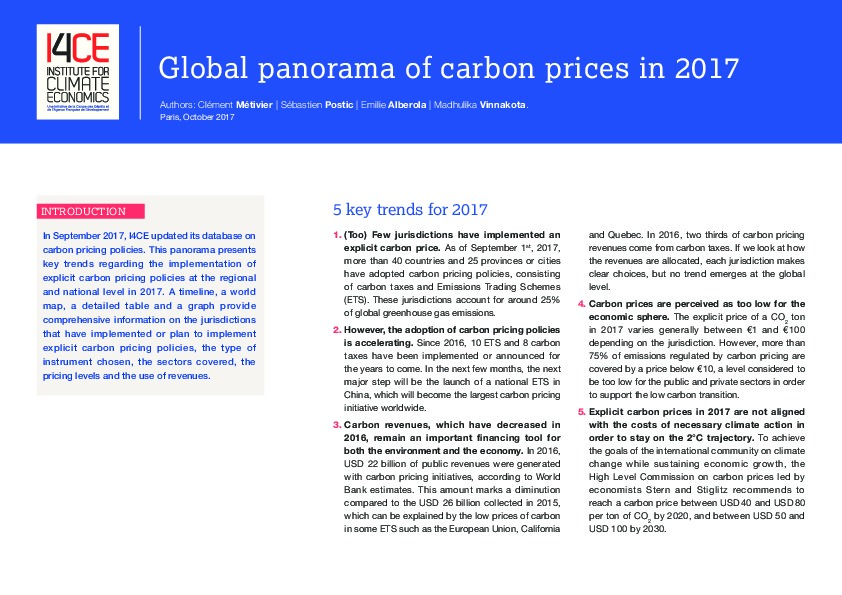Landscape of carbon prices in 2017
In September 2017, I4CE updated its database on carbon pricing policies.
This panorama presents key trends regarding the implementation of explicit carbon pricing policies at the regional and national level in 2017. A world map, a detailed table and a graph provide comprehensive information on the jurisdictions that have implemented or plan to implement explicit carbon pricing policies, the type of instrument chosen, the sectors covered, the pricing levels and the use of revenues.
5 key trends for 2017:
- (Too) Few jurisdictions have implemented an explicit carbon price ;
- The adoption of carbon pricing policies is accelerating ;
- Carbon revenues, which have decreased in 2016, remain an important financing tool for both the environment and the economy ;
- Carbon prices are perceived as too low for the economic sphere ;
- Explicit carbon prices in 2017 are not aligned with the costs of necessary climate action in order to stay on the 2°C trajectory.


